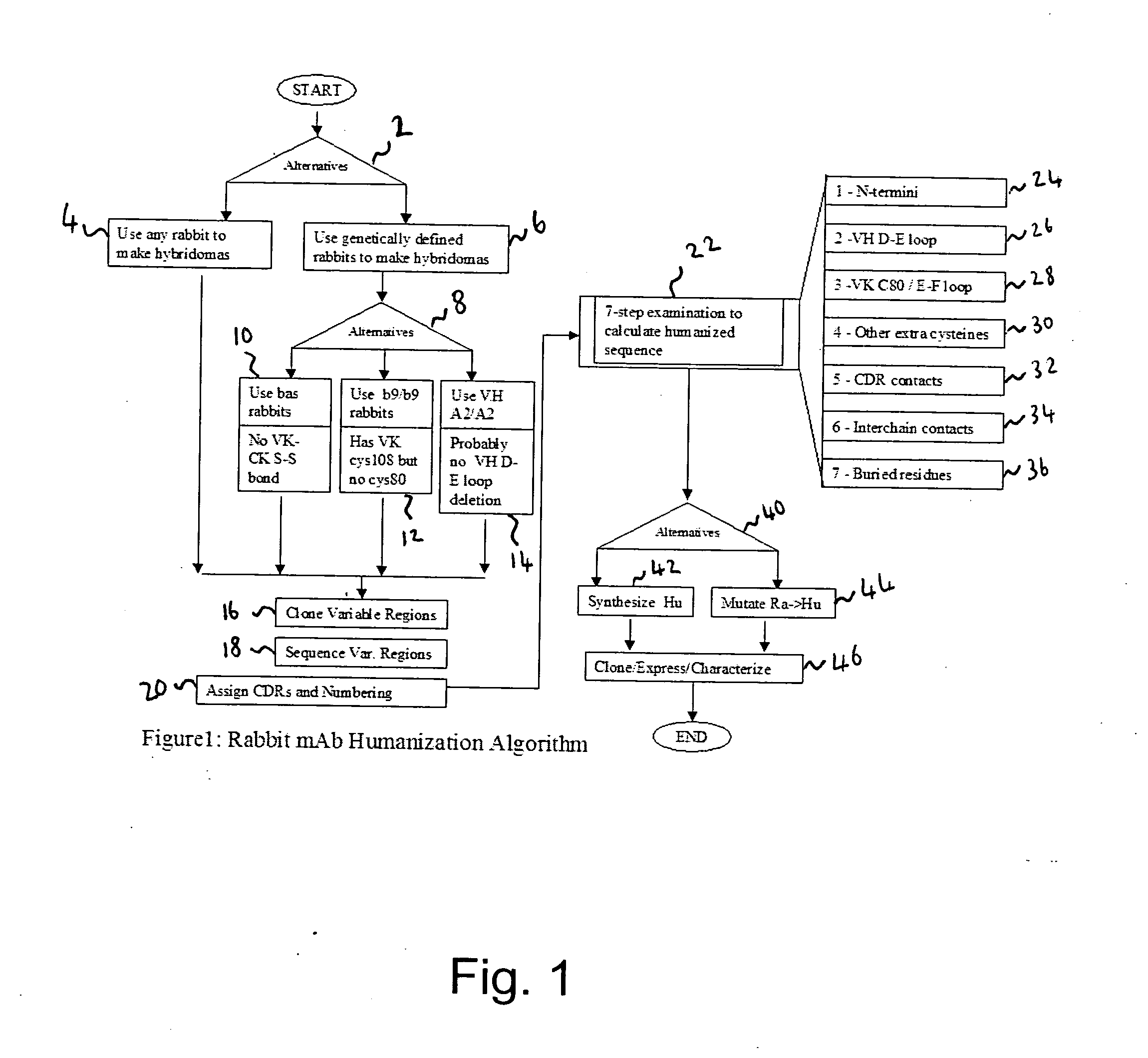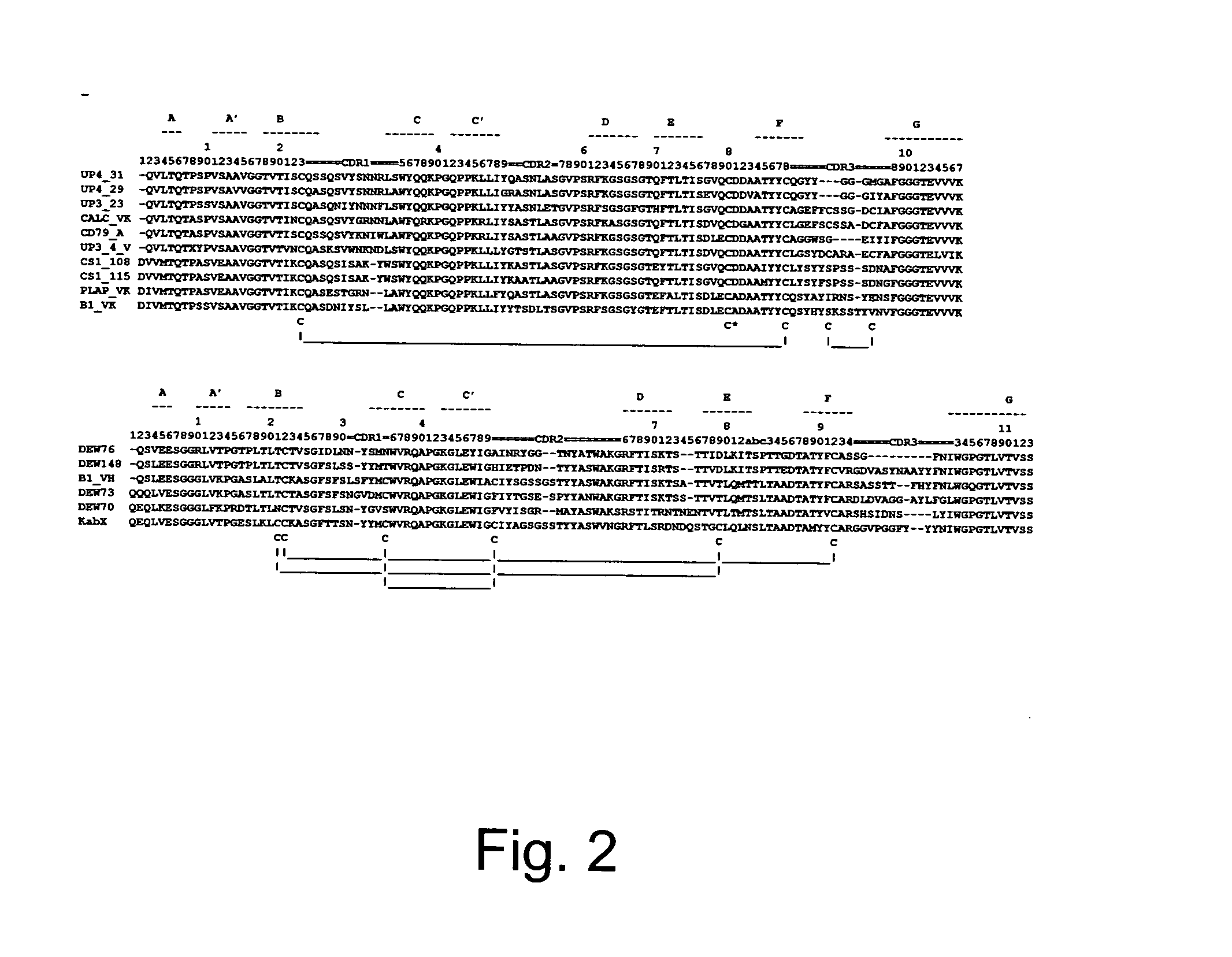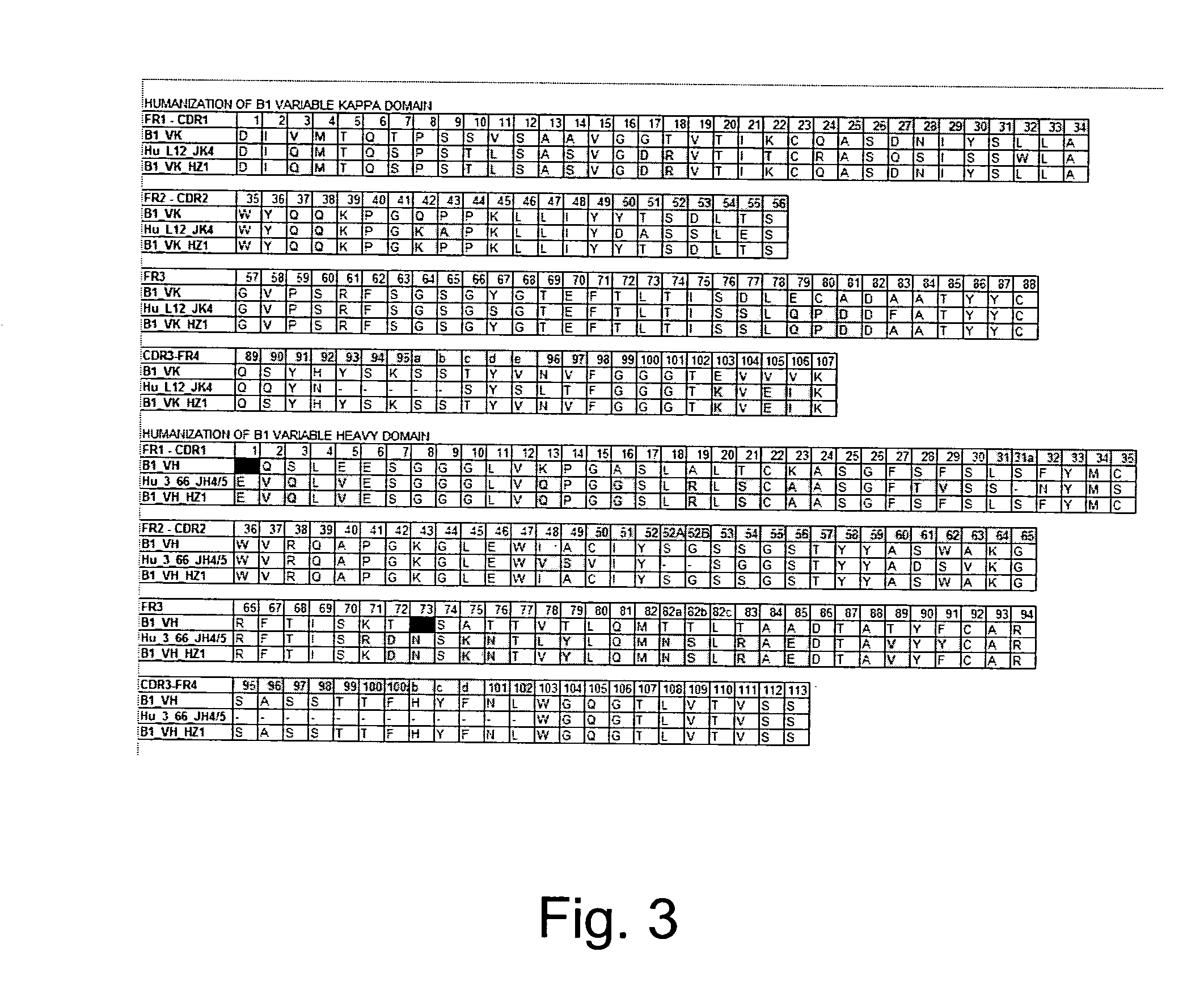Methods for humanizing rabbit monoclonal antibodies
- Summary
- Abstract
- Description
- Claims
- Application Information
AI Technical Summary
Benefits of technology
Problems solved by technology
Method used
Image
Examples
example 1
Rabbit Monoclonal Antibodies
[0137]FIG. 2 depicts sequence alignments of variable heavy and kappa chains cloned from various rabbit monoclonal developed at Epitomics. It demonstrates structural features of rabbit chains that are unusual relative to those of human and murine antibodies. A majority of the VK chains and half of the VH chains are short by one residue on the N-terminus (relative to other rabbit sequences as to human sequences). A majority of the heavy chains is also short by one or two residues in the D-E loop region. All isolated kappa chains have a cysteine residue at position 80. Many of the kappa chain CDR3 sequences are longer than those of any previously known human or murine antibody. A few kappa chains have an extra pair of cysteine residues in their third CDR. Additional pairs of cysteines are also present in some of the VH regions. Finally, while this fact is not clearly demonstrated in the figure, some of the CDRs cannot be assigned to a previously known canon...
example 2
Humanization of Rabbit Monoclonal Antibody B1
[0138] The variable kappa and heavy chains of the rabbit anti-integrin beta-6 monoclonal antibody B1 were PCR-cloned as follows. Several independent PCR products were sequenced and one PCR reaction with one set of primers is usually sufficient.
Preparation of a hybridoma cell suspensionspin 1 ml growing B1 cells 1100 RPM 5 minwash with 1X PBScount cells and adjust to 400,000 cells / mlPreparation of RNAAdd 1 ul cells to 9 ul Buffer A on iceAdd 5 ul cold Buffer Bheat to 65° C. 1 mmcool gradually in Thermocycler55° C. 45° C. 35° C. 23° C. Ice30 sec 30 sec 30 sec 2 minAdd cold Buffer C - 5 ul per tubeIncubate at 42° C. for 42 minput back in IceBUFFERS A, B, CBuffer A2 ul DTT (0.1 M)2 ul 5X first strand buffer5 ul DEPC treated H2OBuufer B1.0 ul 0.1% NP401.0 ul First strand buffer1.0 ul oligo dT0.5 ul RNAseOUT 40 U / ml1.5 ul DEPC treated H2OBuffer C1 ul 10 mM dNTP mix1 ul 5X First strand buffer (Invitrogen)1 ul Superscript RTII (Invitrog...
PUM
| Property | Measurement | Unit |
|---|---|---|
| Length | aaaaa | aaaaa |
| Immunogenicity | aaaaa | aaaaa |
| Light | aaaaa | aaaaa |
Abstract
Description
Claims
Application Information
 Login to View More
Login to View More - R&D
- Intellectual Property
- Life Sciences
- Materials
- Tech Scout
- Unparalleled Data Quality
- Higher Quality Content
- 60% Fewer Hallucinations
Browse by: Latest US Patents, China's latest patents, Technical Efficacy Thesaurus, Application Domain, Technology Topic, Popular Technical Reports.
© 2025 PatSnap. All rights reserved.Legal|Privacy policy|Modern Slavery Act Transparency Statement|Sitemap|About US| Contact US: help@patsnap.com



